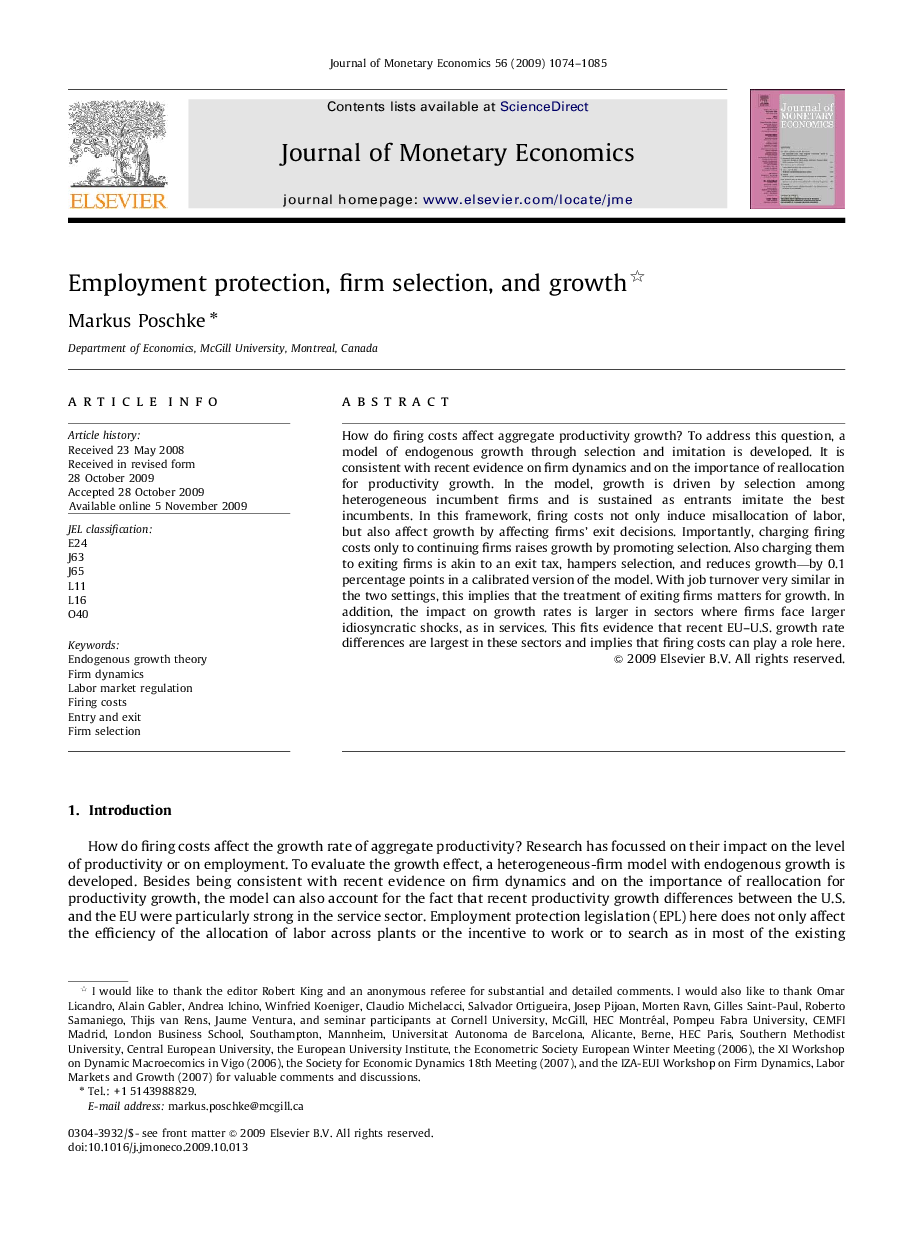| Article ID | Journal | Published Year | Pages | File Type |
|---|---|---|---|---|
| 967078 | Journal of Monetary Economics | 2009 | 12 Pages |
Abstract
How do firing costs affect aggregate productivity growth? To address this question, a model of endogenous growth through selection and imitation is developed. It is consistent with recent evidence on firm dynamics and on the importance of reallocation for productivity growth. In the model, growth is driven by selection among heterogeneous incumbent firms and is sustained as entrants imitate the best incumbents. In this framework, firing costs not only induce misallocation of labor, but also affect growth by affecting firms' exit decisions. Importantly, charging firing costs only to continuing firms raises growth by promoting selection. Also charging them to exiting firms is akin to an exit tax, hampers selection, and reduces growth-by 0.1 percentage points in a calibrated version of the model. With job turnover very similar in the two settings, this implies that the treatment of exiting firms matters for growth. In addition, the impact on growth rates is larger in sectors where firms face larger idiosyncratic shocks, as in services. This fits evidence that recent EU-U.S. growth rate differences are largest in these sectors and implies that firing costs can play a role here.
Keywords
Related Topics
Social Sciences and Humanities
Economics, Econometrics and Finance
Economics and Econometrics
Authors
Markus Poschke,
